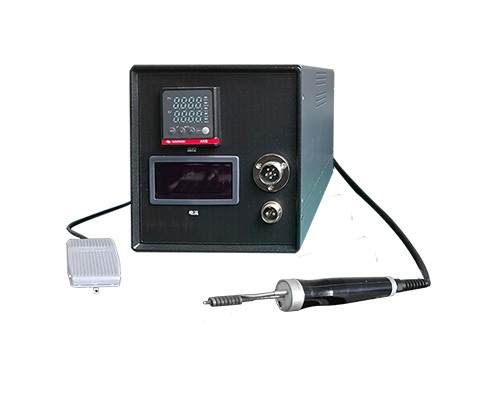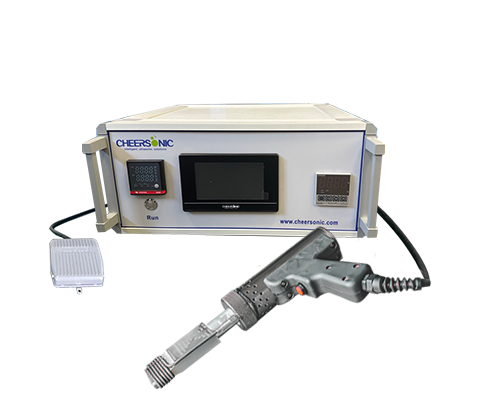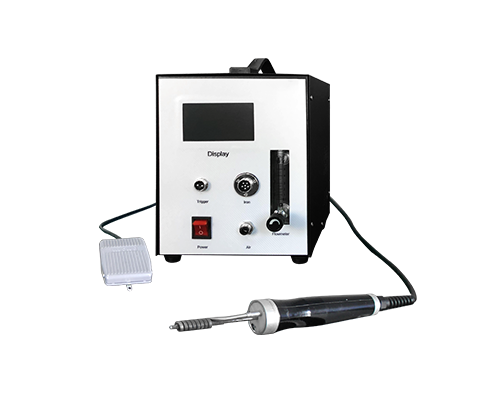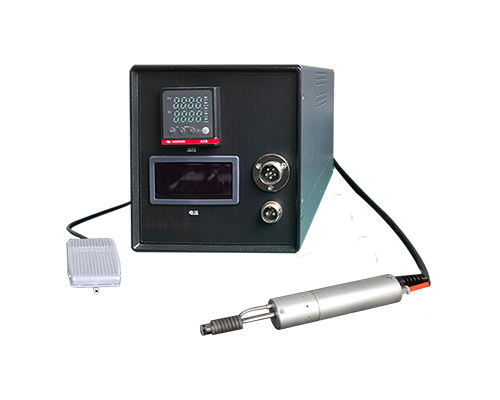In the field of precision soldering of electronic components, miniaturization of pad size and refinement of soldering materials are becoming increasingly common. Traditional soldering methods are often limited by issues such as residual flux and insufficient soldering precision. The emergence of ultrasonic soldering irons, leveraging the core advantages of fluxless soldering, provides an efficient solution to the challenges of soldering thin gold ribbons to tiny gold-plated pads.
The most notable feature of this soldering equipment is its lack of flux. While flux in traditional soldering can remove oxide layers and aid solder flow, residual flux can corrode components, affect circuit performance, and increase production costs during subsequent cleaning. Ultrasonic soldering irons utilize high-frequency ultrasonic vibrations to directly break down the oxide film on the metal surface during the soldering process, ensuring full contact between the metal atoms of the thin gold ribbon and the gold-plated pad on the PCB, achieving a strong bond. This fundamentally avoids the risks associated with flux and is particularly suitable for soldering precision electronic components requiring extremely high cleanliness.

Its primary application is connecting thin gold ribbons to tiny gold-plated pads. In practice, the gold-plated pads on the PCBs being soldered are only approximately 2mm in size, and the thin gold ribbons are as fine as 250μm in width—equivalent to one-third the diameter of a human hair. The soldering precision required is described as "micrometer control at the millimeter level." Ultrasonic soldering irons utilize precise temperature control and high-frequency vibrations to ensure the soldering area reaches the required temperature. They also leverage ultrasonic energy to quickly form a stable metal bond between the gold ribbon and the pad, preventing damage to tiny components caused by excessive temperatures or gold ribbon breakage and pad detachment due to uneven soldering force.
In the field of precision electronics manufacturing, such as the production of microsensors and high-frequency communication modules, the advantages of ultrasonic soldering irons are becoming increasingly prominent. They not only solve the soldering challenges of tiny components, but also simplify the production process and improve product reliability through a flux-free process, becoming a key driver in the development of smaller and higher-performance electronic components.





